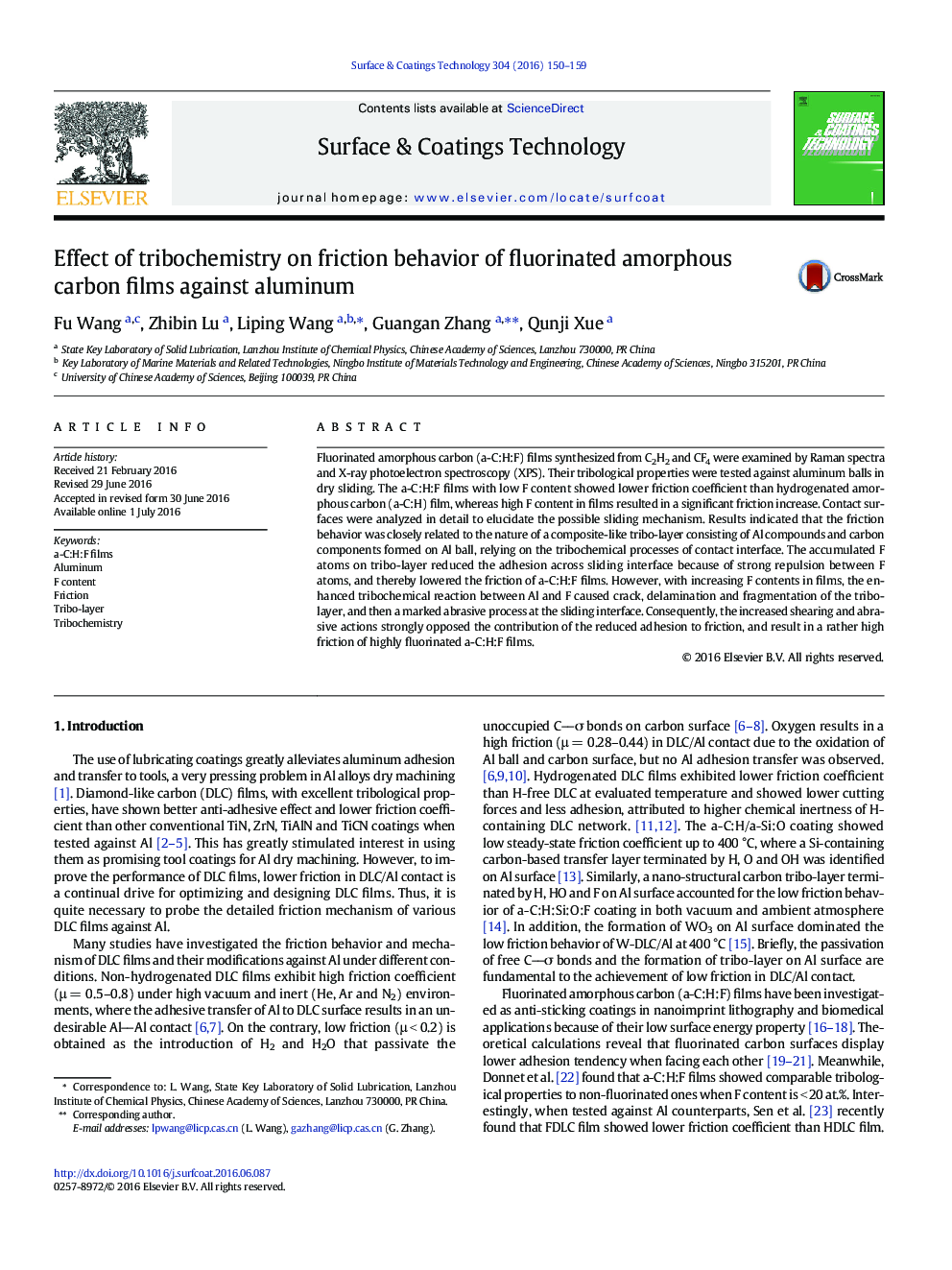| Article ID | Journal | Published Year | Pages | File Type |
|---|---|---|---|---|
| 8024887 | Surface and Coatings Technology | 2016 | 10 Pages |
Abstract
Fluorinated amorphous carbon (a-C:H:F) films synthesized from C2H2 and CF4 were examined by Raman spectra and X-ray photoelectron spectroscopy (XPS). Their tribological properties were tested against aluminum balls in dry sliding. The a-C:H:F films with low F content showed lower friction coefficient than hydrogenated amorphous carbon (a-C:H) film, whereas high F content in films resulted in a significant friction increase. Contact surfaces were analyzed in detail to elucidate the possible sliding mechanism. Results indicated that the friction behavior was closely related to the nature of a composite-like tribo-layer consisting of Al compounds and carbon components formed on Al ball, relying on the tribochemical processes of contact interface. The accumulated F atoms on tribo-layer reduced the adhesion across sliding interface because of strong repulsion between F atoms, and thereby lowered the friction of a-C:H:F films. However, with increasing F contents in films, the enhanced tribochemical reaction between Al and F caused crack, delamination and fragmentation of the tribo-layer, and then a marked abrasive process at the sliding interface. Consequently, the increased shearing and abrasive actions strongly opposed the contribution of the reduced adhesion to friction, and result in a rather high friction of highly fluorinated a-C:H:F films.
Related Topics
Physical Sciences and Engineering
Materials Science
Nanotechnology
Authors
Fu Wang, Zhibin Lu, Liping Wang, Guangan Zhang, Qunji Xue,
